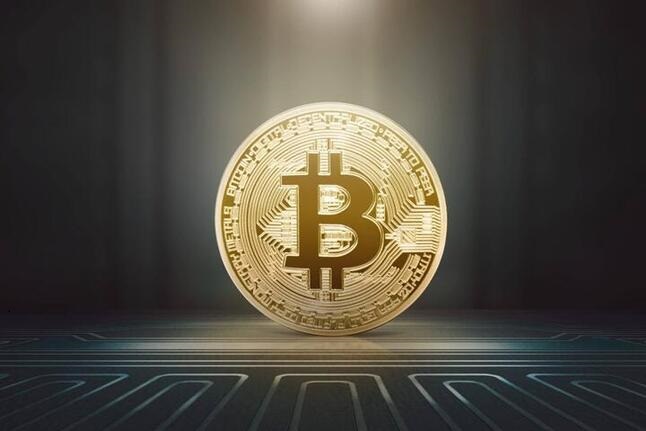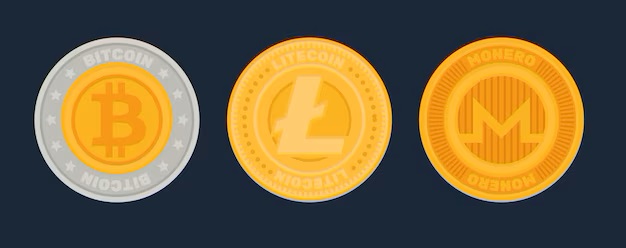To maximize potential benefits, exploring the advanced capabilities of this blockchain solution is crucial. Known for its swift transaction speeds, the platform can process thousands of operations per second, making it suitable for numerous applications, including decentralized finance and smart contracts.
Utilizing a unique consensus algorithm significantly enhances security without compromising scalability. This ensures that users can transact in a secure environment while taking advantage of low fees, which makes it attractive for both developers and investors. Implementing effective governance systems allows participants to engage directly in decision-making processes, fostering a robust community and ensuring sustainable development.
Investing in its native token provides access to multiple use cases, such as transaction fees, staking, and rewarding network participants. This encourages active involvement and aligns the interests of users and developers alike. By thoroughly examining these attributes, one can better appreciate the potential this blockchain ecosystem offers for innovation and growth.
What is Tomochain and How Does It Operate?
Tomochain represents a scalable blockchain solution designed for decentralized applications. Utilizing a unique architecture based on a layer-1 protocol, it achieves high throughput and low transaction costs, allowing developers to create efficient dApps. This platform employs a dual-consensus mechanism, integrating both Proof of Stake Voting (PoSV) and a modified version of Proof of Authority (PoA), ensuring transaction validation is both secure and swift.
Key Components of the Infrastructure
The ecosystem features a customizable token standard, enabling users to issue their own digital assets seamlessly. Cross-chain compatibility with Ethereum allows for efficient asset transfer, broadening opportunities for developers and users alike. Validators play a crucial role in maintaining network integrity, rotating periodically to ensure decentralization and robust security.
Transaction Process and Speed
With an average block time of just two seconds, this system ensures rapid processing times. Transactions are recorded in a transparent ledger, providing accountability and traceability. The network accommodates thousands of transactions per second, offering a solution for applications that demand quick and reliable operations.
Key Features of Tomo Coin in Decentralized Finance
Fast transaction speeds contribute significantly to enhancing user experience. With block confirmation times averaging around 2 seconds, users can conduct operations swiftly without unnecessary delays that plague many traditional blockchain networks.
Low transaction fees attract users seeking cost-effective solutions. Fees typically range from a fraction of a cent to just a few cents, making frequent trading or microtransactions financially viable, unlike other platforms that impose high charges.
Interoperability with various protocols enables seamless integration across different platforms. This capacity allows developers to leverage existing tools and frameworks, promoting innovation and offering users more versatile options in the decentralized finance sector.
The commitment to security is evident through robust consensus mechanisms. The use of advanced algorithms helps prevent malicious activities and ensures that all transactions are verified and trustworthy.
Support for smart contracts empowers developers to create complex financial products. They can implement lending, borrowing, and other DeFi applications without barriers, pushing the boundaries of financial technology.
Governance involvement allows token holders to have a say in protocol changes and developments. This community-driven approach ensures that the network evolves in line with user needs and preferences, fostering a democratic environment.
Decentralized exchanges built on this ecosystem provide liquidity and trading opportunities without centralized intermediaries, enhancing autonomy and privacy for users. Such platforms enable users to maintain control over their assets at all times.
How to Buy and Store Tomo Coin Safely
Select a reputable exchange for acquiring the token. Look for platforms with a solid track record, positive user feedback, and robust security measures. Some well-known exchanges include Binance, Huobi, and KuCoin.
Create an account on your chosen exchange. Verify your identity by providing the necessary documentation. Implement two-factor authentication (2FA) for added security during your transactions.
Deposit funds into your account, typically using fiat via bank transfers or credit cards, or by transferring other cryptocurrencies. Review the exchange’s fees, as they may impact your total investment.
Execute the purchase by placing a market or limit order to acquire the desired amount of the asset. Always confirm the transaction details before finalizing the trade to avoid errors.
After purchase, withdraw the acquired tokens to a secure wallet. Consider hardware wallets such as Ledger or Trezor for offline storage, minimizing exposure to online threats.
| Wallet Type | Security Level | Accessibility |
|---|---|---|
| Hardware Wallet | High | Low |
| Software Wallet | Medium | Moderate |
| Exchange Wallet | Low | High |
Regularly update your wallet software and exchange applications to protect against vulnerabilities. Stay informed about any security advisories or updates related to your chosen storage solution.
Back up your wallet information securely. Store your recovery seed or private keys offline, ensuring that only you have access to them. Avoid sharing sensitive information with anyone.
Monitor your holdings periodically but avoid frequent trading unless necessary. Keeping investments in a long-term perspective can reduce stress and volatility-related decision-making.
Comparing Tomochain’s Transaction Speed with Other Blockchains
The average confirmation time on this platform is approximately 2 seconds, significantly outperforming several mainstream networks. For instance, Bitcoin transactions typically require around 10 minutes for confirmation, while Ethereum often takes between 15 seconds to a few minutes, depending on network congestion.
By analyzing the speed of various blockchain systems, it becomes evident that this technology facilitates transactions at a rate closer to centralized alternatives. With the capacity to process 2,000 transactions per second, this chain surpasses notable competitors like EOS, which offers around 4,000 TPS, but struggles under heavy load.
Its speedy architecture is a product of a unique consensus mechanism, which allows for greater scalability and throughput. In direct comparisons, networks utilizing Proof of Work exhibit longer delays. Hence, enterprises and applications requiring swift transactions may favor this platform due to its performance metrics.
For users considering transaction speed and scalability, evaluating these attributes becomes paramount. The ability to handle high volumes with minimal latency positions this blockchain as a strong contender in a rapidly growing technological field. Applications focusing on real-time data and microtransactions stand to benefit significantly from these advancements.
Real-World Applications of Tomochain Technology
This blockchain solution finds utility across various industries due to its scalability and low transaction costs. Organizations can implement it to enhance transparency and security in their operations.
- Supply Chain Management: Companies can use this technology for real-time tracking of goods. This enhances accountability and reduces fraud. Data recorded on the blockchain is tamper-proof, thus ensuring reliable product provenance.
- Financial Services: Decentralized finance (DeFi) platforms built on this infrastructure offer low-cost transactions for lending, borrowing, and trading. Users benefit from faster settlement times compared to traditional banking.
- Gaming: Developers can create in-game assets as non-fungible tokens (NFTs), enabling players to truly own their items. This technology allows easy trading and improves monetization for game studios.
- Healthcare: Patient records can be securely stored and shared among authorized personnel. This technology ensures data integrity, enhancing patient care and streamlining operations.
- Voting Systems: Implementations create secure and transparent voting platforms. This approach can increase public trust and ensure fair elections, with every vote verifiably counted.
Businesses leveraging this technology can realize reduced operational costs while enhancing stakeholder trust through transparent processes. Understanding the specific use cases allows for better strategic implementation and maximized benefits.
- Identify industry-specific problems that can be addressed by blockchain.
- Evaluate the potential ROI of integrating this technology into workflows.
- Develop a phased implementation plan to minimize disruption during the transition.
Future Developments and Roadmap for Tomochain
Focus on enhancing interoperability with various blockchain networks through advanced bridge technology. Prioritize partnerships that support seamless asset transfers and decentralized applications across multiple platforms. This integration can significantly expand user access and increase transaction volume.
Scalability Improvements
Implement sharding techniques to boost transaction throughput and reduce latency. This strategy will accommodate increasing user demand and make the environment more attractive for developers. Regular updates on performance metrics should be shared to maintain transparency with stakeholders.
Community Engagement and Governance
Encourage community-led initiatives for governance upgrades, including proposals for network modifications and feature enhancements. Establish a clear voting mechanism that allows token holders to influence decision-making effectively. Regular community webinars and discussions can foster a stronger connection with users and developers.
Q&A: What is tomochain and the tomo coin
How does TomoChain employ proof-of-stake voting with a maximum of 150 masternodes and why is this design more energy-efficient than traditional proof-of-work consensus like bitcoin mining?
Tomochain is a blockchain that secures its masternode network through PoSV, allowing tomochain masternode candidates to stake TOMO; selected validators process blocks at low gas fees, giving the TomoChain ecosystem greener throughput than PoW.
Why is TOMO the native cryptocurrency of the Tomochain blockchain, and how did its supply migrate from an ERC-20 token on the Ethereum blockchain after the tomochain mainnet went live in December 2018?
The original ICO minted an ERC-20, then the Tomochain team swapped to the native coin when mainnet launched, locking a total supply of 100 million and enabling on-chain staking and Tomoz gasless transactions.
What incentives do TomoChain masternodes receive, and how can holders earn by staking via TomoWallet?
Validators collect block rewards and a share of transaction fees; delegators simply bond tokens in tomo wallet or TomoWallet and share passive income proportional to contributions.
How does the Tomox protocol and Tomox SDK enable a range of DEXs within the Tomochain ecosystem?
Tomox provides order-book matching and liquidity pooling so builders spin up decentralized exchanges connected to the Tomochain network, broadening Web3 trading without resorting to high-fee Layer 1s.
Who is Long Vuong, and what role does he play as project lead among the founders at TomoChain?
Long Vuong, previously a strategist on the successful NEM blockchain, now spearheads the Tomochain foundation and the expansive Tomochain roadmap focused on enterprise DeFi and NFT infrastructure.
How does Tomoz cut gas fees for dApp users, and why is this feature highlighted in every look at the Tomochain product suite?
Tomoz lets token issuers sponsor network fees, so end-users send transactions with zero TOMO, promoting seamless onboarding to the range of decentralized applications running on TomoChain.
What does the price chart reveal about the latest price of TOMO relative to its ICO price and historical lowest price?
Price stats show TOMO trading well above launch levels but below the 2021 peak, reflecting broader crypto market cycles while maintaining healthy circulating supply liquidity.
Why do analysts see synergy between TomoChain and Web3 identity when evaluating the tomochain product pipeline?
TomoChain offers on-chain KYC modules and decentralized login, positioning the network as infrastructure for future web3 credential markets.
How can developers use Tomox SDK and TomoChain core to port solidity code, given that Tomochain is EVM compatible?
The network supports Ethereum bytecode, meaning contracts need minimal edits; developers compile with standard tooling and deploy directly to TomoChain’s faster block times.
What does the community expect from upcoming milestones on the TomoChain roadmap, and how might these affect the tomochain price prediction?
Planned upgrades include cross-chain bridges and a crypto domain service; successful delivery could tighten exchange listings, potentially lifting the price of TomoChain in the next market upswing.






